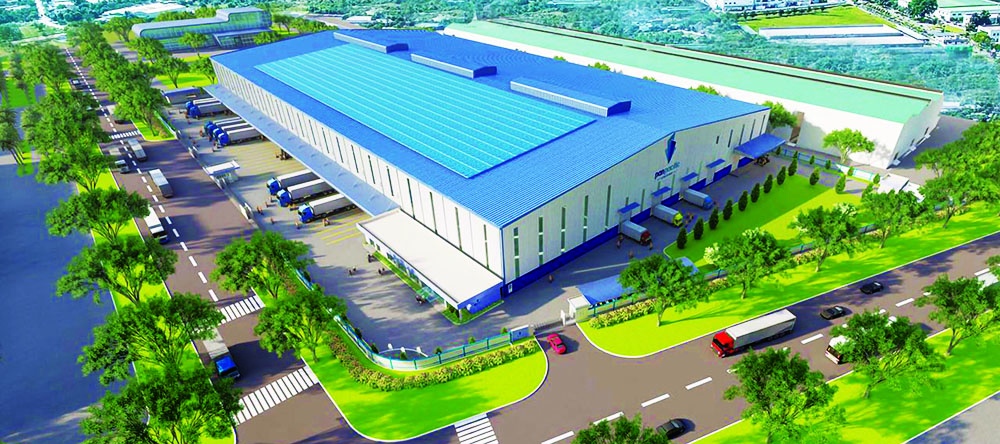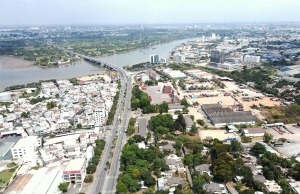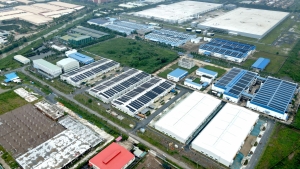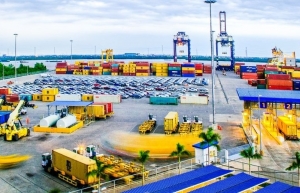The pros and cons of IP relocations
Traditional industrial parks (IPs) often include no access to centralised wastewater treatment, and are otherwise incompatible with the surrounding urban land uses. While the government approved a national policy of relocating IPs in 2009, until now, it has not implemented the policy due to economic reasons such as tenants having long land lease terms remaining and the additional expenses for leasing a new site.
The past 10 years have seen a growing focus on optimising IPs location and relocation decisions, reflecting the evolving needs of businesses, the dynamic nature of global manufacturing and supply chains, and the growing importance of sustainability.
This broader context of IPs market opportunities and constraints, the mission or function of an IP and corresponding mix of industries selected to accomplish that mission, may serve as an incentive for relocating an existing IP.
Some recent market trends influencing IP location include that global production networks and outsourcing are influencing relocation decisions, with some companies seeking lower-cost locations; industry-specific parks catering to specific sectors like pharmaceuticals or high-tech; development of smaller, strategically located parks within urban areas are catering to e-commerce and last-mile delivery needs; IP development strategies tailored to draw in specific segments; special economic zones offering tax breaks; and eco-IPs attracting environmentally conscious companies.
 |
| Timothy D. Van Epp, fellow of the American Institute of Certified Planners, and Mai Nguyen of the American Planning Association’s International Division |
Factors affecting IPs location
Why do many existing IPs seek new locations? Shortcomings of existing locations that drive IP relocations include outdated infrastructure, environmental regulations, changing production needs, or economic shifts in the existing location, and land use trends in the surrounding area. These negative factors of existing locations are then compared against the positive attributes of potential alternative locations, many relating to contemporary market realities.
Key factors include logistics and connectivity, with studies emphasising the increasing importance of access to transportation infrastructure (roads, railways, airports, ports) and efficient logistics networks for IPs to attract businesses.
Smart technologies are also critical, with research being conducted on how parks can provide infrastructure and support for digitalisation and integration of technologies like automation, sensor networks, data analytics, and smart grids to enhance and optimise operational efficiency and resource management within IPs. Studies analyse how automation might affect IP space requirements and workforce needs in the future.
Skilled workforce and innovation are also needed. The availability of a skilled workforce and proximity to research institutions are becoming crucial factors, fostering innovation and attracting technology-driven companies. The need for parks to adapt to changes in workforce skills and automation is a growing concern.
Sustainability is also high on the agenda. Whether an eco-IP is envisioned, environmental regulations and growing corporate social responsibility are driving IP planning towards minimising the ecological impact of its site location, as well as its construction and operation and incorporating renewable energy sources, utilising green infrastructure, and minimising waste and pollution.
The challenges associated with relocation – for the IP tenants and owner – clearly include cost implications, disruption to operations, and potential workforce displacement. However, there are broader concerns, for the neighbouring community and the city in general, that must be addressed to ensure a smooth transition and win-win outcomes for all stakeholders. Using the sustainability framework of prosperity, people, and planet, involves balancing the economic impact of IPs on job loss or creation, regional economic development, and attracting foreign investments on the one hand, with community concerns relating to displacement of neighbourhoods, environmental pollution, and infrastructure strain caused by IPs.
 |
| The pros and cons of IP relocations, |
Decision-making tools
There are many tools available to support decision-making relative IP location and relocation, such as multi-criteria decision analysis. This approach helps decision-makers weigh various factors with different priorities, leading to more informed choices for park location and relocation. Methods consider a wide range of factors, including proximity to suppliers/markets, land availability and costs, infrastructure connections and costs, labour availability and costs, environmental and other regulatory requirements and costs.
There are also data-driven approaches using spatial analysis tools and advanced location modelling. Big data and spatial analysis tools are increasingly used to identify optimal locations and predict relocation impacts. Geographic information systems and spatial modelling techniques are used to analyse potential locations based on various spatial data sets, including land availability, infrastructure, labour costs, and environmental regulations.
Environmental and Social Impact Assessment also play a key role. The Ministry of Natural Resources and Environment’s requirements do not include social assessment, but for site-specific analyses of IP relocation there would be advantages of applying international donor methods of social impact assessment. Management systems for addressing environmental, health and safety, and social concerns also offer time-tested methods for achieving performance objectives for cities, IP owners, and tenants.
Involving communities, workers, and environmental groups in the decision-making process is important for creating win-win outcomes for all parties affected and interested in a relocation decision.
The Ministry of Planning and Investment has partnered with international donors such as the United Nations Industrial Development Organization and the SECO Corporation of Switzerland in establishing frameworks and policies, including stakeholder engagement methods, in creating eco-IPs throughout Vietnam.
Stakeholder engagement in those development processes has emphasised state management agencies at all levels of government and relevant members of the private sector and local community. Methods utilised have included training courses, workshops, communication and exchange programmes to familiarise stakeholders with the positive experiences and benefits of eco-IP development, including its industrial symbiosis and circular economy attributes, in Vietnam and internationally.
Urban planning for IP relocation
Whether locating a new IP of any kind, or relocating an existing IP, there is a common need and challenge for not only stakeholder engagement but for comprehensive urban planning. And this applies to both the location of the existing IP and to the new location.
Firstly, what happens to a city neighbourhood or district when an existing IP leaves the area? Is there a loss of jobs or other economic loss due to lost demand for local goods and services that would not be replaced by the newly relocated IP? What can the buildings and land left behind be used for? Can some of the buildings be adaptively reused? Is there contamination by hazardous chemicals in the buildings, soil, surface water or groundwater that needs to be cleaned up before they can be productively used again?
These concerns will often reveal themselves in uniquely local ways, so that a one size fits all solution will not likely be effective for all relocating IPs. Local factors influencing the nature and extent of these issues include the type of IP and corresponding mix of industrial tenants, the economic conditions and economic development needs of the vicinity, the existing surrounding land uses and population, existing community concerns, and the potential and specific plans for improved social, economic and environmental conditions.
Relocating an entire IP is equivalent to relocating an entire urban land use. Such an endeavour necessitates engaging a wide range of city government, business and citizen stakeholders, as well as the IP owners and tenants, in a comprehensive urban planning process addressing and connecting both the existing and new IP locations.
This planning process should explore the opportunities and use the tools described above. In doing so, the process should strive for win-win solutions for all parties involved. While enforcing existing environmental standards and regulations at the existing IP location is a minimum approach to improving the situation, it is only a suboptimal solution.
Alternatively, regardless of what new type of IP may be preferred, there is no reason why it cannot be overlain with at least some elements of the eco-IP approach, and in so doing be able to leverage the now well-established frameworks and policies for developing such parks. Combining the eco-IP approach with a package of government incentives for relocation and/or financing through a public-private partnership may make the difference in IP relocation decision-making.
| The fourth Vietnam Industrial Property Forum (VIPF 2024) organised by Vietnam Investment Review, under the auspices of the Ministry of Planning and Investment and coordinated with the Vietnam Industrial Real Estate Association, will take place at Mai House Saigon Hotel in Ho Chi Minh City on Tuesday, July 30. Themed “Going Green for New Investment Waves”, the forum will focus on assessing the growth prospects of Vietnam’s industrial property market and the development trends of specialised industrial real estate products. It will also address legal issues related to building standards for eco-industrial parks, converting existing parks to eco-parks, and green development according to ESG standards to attract new types of projects, especially high-tech and large-scale projects funded by global conglomerates. In the framework of this year’s forum, the Organising Board will implement a selection program themed VIPF Green Future Awards. The selection is to encourage and honour investors with strategies to develop eco-industrial parks, as well as secondary investors renting land in industrial parks with green development strategies, using clean energy, sustainable infrastructure, smart management of water resources and resources in the ecosystem, and contributing to promoting sustainable development trends. The deadline for receiving registration dossiers is July 10. For more information on the forum and the award, please visit : vipf.vir.com.vn |
 | Outdated IPs must be dealt with The Vietnamese government has started to move industrial parks that do not meet set conditions to outside central areas. Alex Crane, managing director for Knight Frank, shares his recommendations for advancing this process. |
 | Industrial parks increase supply of high-quality ready-built factories The strong development of the industrial real estate market has promoted the ready-built factory segment in the eyes of international and domestic manufacturers. |
 | No plain sailing for eco-IP conversion The creation of eco-industrial parks should increase competitiveness, but the implementation process is leaving developers with prolonged headaches. |
What the stars mean:
★ Poor ★ ★ Promising ★★★ Good ★★★★ Very good ★★★★★ Exceptional
 Tag:
Tag:
Related Contents
Latest News
More News
- Green finance offers 'passport' for Vietnamese construction, building materials firms (December 15, 2025 | 08:00)
- Gamuda Land commit long-term investment (December 12, 2025 | 11:49)
- HITC ties up with Evolution to develop AI and hyperscale data centres in Vietnam (December 11, 2025 | 12:09)
- Real estate deals boom via high-profile names (December 08, 2025 | 11:32)
- Industrial segment shaped by M&As (December 08, 2025 | 08:00)
- The Privé sets the benchmark for luxury real estate (December 05, 2025 | 08:28)
- TD CASA and the rise of bespoke interior design in luxury living spaces (December 03, 2025 | 14:14)
- Lee Soo-man's Blooming Sky to build Gia Lai culture, sport, and entertainment complex (December 02, 2025 | 16:41)
- Sustainability in DNA of Keppel Vietnam's future urban development strategy (November 28, 2025 | 10:53)
- South Korean investors seek clarity on IP lease extensions (November 24, 2025 | 17:48)






















 Mobile Version
Mobile Version